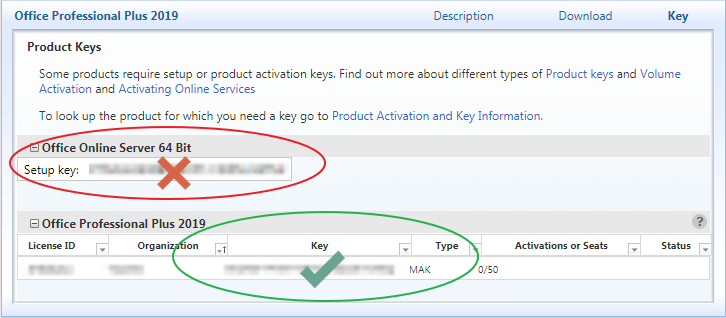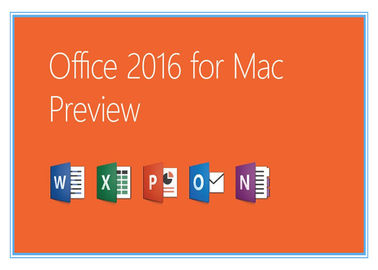Microsoft Office Activation Problems For Mac
- Activation Error Office Mac
- Office 365 Mac Activation Issues
- Microsoft Office Product Key Activation
- Microsoft Office Activation Problems For Mac Pro
- Microsoft Office Activation Problems For Mac Free
You might see this error when you try to activate Office for Mac:
Navigate to Microsoft Office Desktop Apps in the app list, click on it and click on Advanced options Click on Fix, wait for about one minute, and then restart the device If. Close all Office apps. Press the Start button in the lower-left corner of your screen. Type an application name, like Word. The Word program icon appears in the search results. Right-click the Word icon, and select Run as administrator. Select Yes to allow Office to run as administrator. Jun 04, 2019 Troubleshoot volume activation of Office. 6/4/2019; 6 minutes to read; In this article. Applies to: Volume licensed versions of Office 2019 and Office 2016, including Project and Visio Setting up volume activation of Office, including Project and Visio, by using Key Management Service (KMS) or Multiple Activation Key (MAK) can be challenging. Aug 16, 2018 Microsoft Office Experiencing Activation Issues on Mac and PC Fixed Thursday August 16, 2018 8:21 AM PDT by Joe Rossignol Microsoft Office appears to. Feb 14, 2019 I was just trying to get an idea of how many people have problems with Microsoft Office activation. I bought my daughter an iMac for use at university. She downloaded a copy of Office 365 which she got free from University. This tended to work quite well, but.
The system requires that you sign on to a valid account. The error code is: 0xD000000C
Troubleshoot error code 0xD000000C on Office for Mac
Make sure the internet is working on the Mac you're trying to install on. You can do this by opening your internet browser and going to www.microsoft.com. If the page loads, your internet connection is working.
Quit out of all Office apps.
Download and run the License removal tool to remove all the Office keychain entries.
Start any Office app again and follow the activation prompts.
Are you using a network account?
Activation Error Office Mac
If you've signed in to your Mac using a Network account such as Open directory accounts, this error may occur because Office for Mac can't write your credentials into the keychain as it is 'read-only.'
If you are signed in with a network account, sign out and sign back in with your local user account. Try activation again.
If you don't have a local user account, you must create one:
From the Apple menu, select System Preferences > Users & Groups.
Select Click the lock to make changes, and type your password. Select Unlock.
Select +, and then fill in the new account information, and then select Create User.
Log into your local user account and activate again.
Contact support
If you're still having issues with activating Office for Mac, please contact Microsoft support.
-->Applies to:Volume licensed versions of Office 2019 and Office 2016, including Project and Visio
Setting up volume activation of Office, including Project and Visio, by using Key Management Service (KMS) or Multiple Activation Key (MAK) can be challenging. Use these steps to troubleshoot the most common issues.
Note
If you're an Office user troubleshooting a personal copy of Office, see Unlicensed Product and activation errors in Office instead of reading this article.
Many of the solutions include running the ospp.vbs, which you need to run from an elevated command prompt on the computer on which Office is installed. The opss.vbs script is located in the Program FilesMicrosoft OfficeOffice16 folder. If you installed the 32-bit version of Office on a 64-bit operating system, go to the Program Files (x86)Microsoft OfficeOffice16 folder. You can also use the slmgr.vbs script to configure and manage volume activation. For detailed information about these scripts, see Tools to manage volume activation of Office.
Tips for configuring KMS clients and host computers
Generally, you do not have to configure Office Key Management Service (KMS) clients if the KMS host computer used to activate Office was correctly set up and configured. The KMS client automatically searches for the KMS host computer by using DNS and then attempts activation. The KMS service uses service (SRV) resource records (RRs) in DNS to store and communicate the locations of KMS host computers.
By default, KMS host computers automatically publish the information that KMS clients use to find and connect to them by using DNS dynamic update protocol. By default, KMS clients query the DNS server for KMS service information.
You can manually configure KMS host computers and clients, depending on the network configuration and your security requirements. For example, if the network environment does not use SRV records, you can manually configure a KMS client to use a specific KMS host computer. For more information about using DNS with volume activation, see Configure DNS for activating volume licensed versions of Office by using KMS. For more information about how to configure the KMS client, see ospp.vbs script and Activate volume licensed versions of Office by using KMS. For more information about how to configure the KMS host computer, see Configure a KMS host computer to activate volume licensed versions of Office.
KMS activation issues
KMS activation issues can be due to a misconfiguration on one or more of the following items:
Office client
Network/DNS
KMS host computer
Office 365 Mac Activation Issues
To quickly identify your KMS trouble spots, use either the Office Client KMS activation diagnostic or Office KMS Host Activation diagnostic tool to analyze your environment for known issues. These diagnostic tools automate almost all of the troubleshooting steps available for KMS issues and provide a detailed report with recommendations on how to fix the detected issues.
You should always analyze the client first by using the Office Client KMS activation diagnostic tool, even if you feel you have a KMS Host configuration problem. It'll determine if your changes need to occur on the client, your network, or your KMS host.
If the Office Client KMS activation diagnostic tool indicates you have KMS host issues, you should then run the Office KMS Host Activation diagnostic tool.
To use the Office Client KMS activation diagnostic tool
As a local administrator, log into any Office client that is unable to activate using KMS activation.
Go to Office Client KMS activation diagnostic tool and sign in to the Microsoft Support Diagnostics Self-Help portal with your Microsoft Account credentials.
On the New Session page, choose Office Client KMS activation diagnostic.
Enter a name in Session Name text box and then choose Create.
To start the analysis, choose Download.
When you are prompted, choose Run or Save File. If you choose Save File, you can later run the file from the folder where you saved it.
When prompted to select the computer on which to run the diagnostic, choose This Computer, and then choose Next. On the next page choose Start.
When the diagnostic displays an alert indicating a report has been saved, choose Open Report.
Review the details listed in the report Summary section, and then review the problems listed in the Issues Detected section and follow the recommendations provided under Recommended steps and related resources.
To use the Office KMS Host Activation diagnostic tool

As a local administrator, log into your Office KMS host computer.
Go to Office KMS Host Activation diagnostic tool and sign in to the Microsoft Support Diagnostics Self-Help portal with your Microsoft Account credentials.
On the New Session page, choose Office Client KMS Host Activation diagnostic.
Enter a name in Session Name text box and then choose Create.
To start the analysis, choose Download.
When you are prompted, choose Run or Save File. If you choose Save File, you can later run the file from the folder where you saved it.
When prompted to select the computer on which to run the diagnostic, choose This Computer, and then choose Next. On the next page choose Start.
A report is automatically generated and opened in your browser.
Review the information listed in the Summary section and then review the problems listed in the Details section. Follow the recommendations provided under Action needed or comment for the items flagged with 'Attention Required' in the Result column.
MAK activation issues
Office does not activate when it is connected to the network through an authenticated proxy
You have to be connected to the internet to use MAK activation. But, if your internet connection requires authentication, MAK activation won't work and you'll have to activate over the telephone. For more information about this issue, see Knowledge Base article 921471.
How to get the text for activation error codes
Error codes help you troubleshoot activation issues. If you see a dialog box that contains an activation notification, an error code is usually displayed at the lower corner. You can then run ospp.vbs /ddescr together with the error code to see the text of the error message. The text will help you better understand the issue and what to do to fix it.
Another way to obtain an error code is to run ospp.vbs /act on the client computer to manually activate Office. If activation fails, an error code will be shown.
Other activation issues

Licensing information is not updated on the client
To display licensing information for Office applications, open an Office application, such as Word, and go to File > Account.
Microsoft Office Product Key Activation
If you see a notification that product activation is required even though you know that Office is in the licensed state, restart the application.
Mar 14, 2017 To remove the update installer, first drag the Microsoft Lync for Mac 2011 update volume to the Trash, and then drag the file that you downloaded to the Trash. Note: This update is also available from Microsoft AutoUpdate, an application that can automatically keep your Microsoft software up to date. To use AutoUpdate, open Microsoft Lync, and then on the Help menu, click Check for Updates. At the Lync for Mac 2011 sign in page, choose Advanced at the bottom of the page after entering your Office 365 user ID (which is also your email address) in both the Email Address box and the User ID box, and your password. Under Authentication, clear the Use Kerberos box so it's blank. Sep 19, 2011 The Lync for Mac 2011 Deployment Guide is for system implementers, IT managers, system administrators, or other people who plan for, implement, and maintain Lync in their organizations. Lync is available as a standalone edition for volume licensing customers. What is microsoft lync for mac 2011.
The client applications can be in this state because Office was activated by using ospp.vbs /act or the Volume Activation Management Tool (VAMT). In these cases, you must restart any Office applications to complete the activation.
Microsoft Office Activation Problems For Mac Pro
Generic Volume License Keys (GVLKs) for Office
All volume licensed versions of Office, including Project and Visio, have a Generic Volume License Key (GVLK) preinstalled that's used to activate Office by using a KMS host computer. If you entered a MAK key for a product and you want to change the activation method back to KMS, use the appropriate KMS client GVLK. For more information, see GVLKs for KMS and Active Directory-based activation of Office 2019 and Office 2016. The recommended way to enter the key is by using Volume Activation Management Tool (VAMT). You can also use ospp.vbs /inpkey to enter the key.
Microsoft Office Activation Problems For Mac Free
For Office suites, only one key is required for all the products in the suite. For example, if you use Office Professional Plus, you must enter only the Office Professional Plus key for the complete suite. For a complete listing of the keys, see GVLKs for KMS and Active Directory-based activation of Office 2019 and Office 2016.